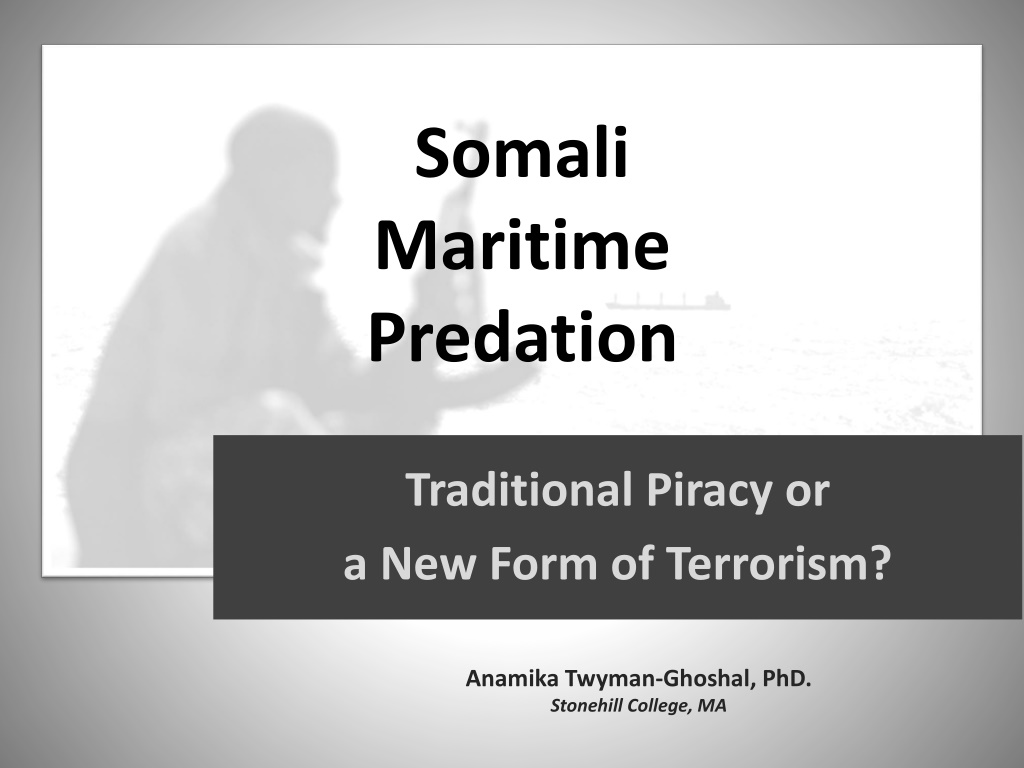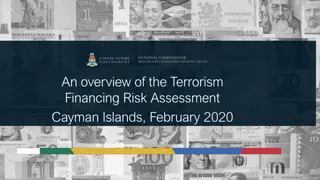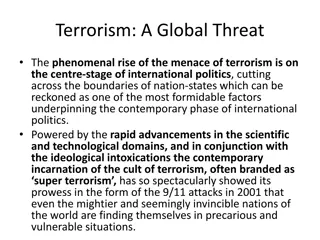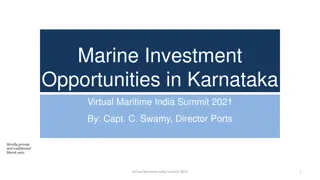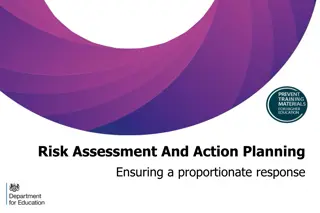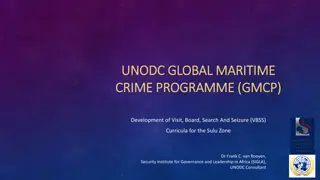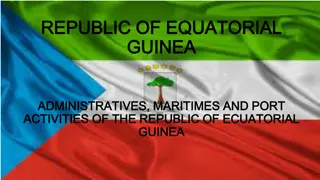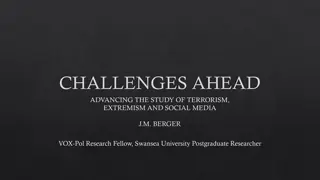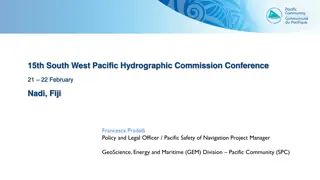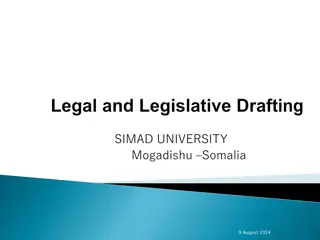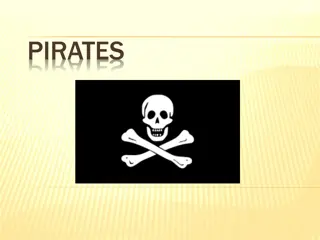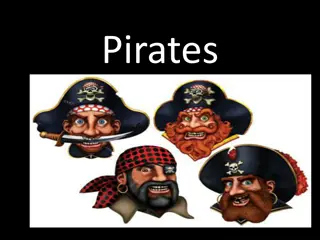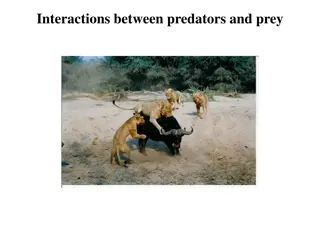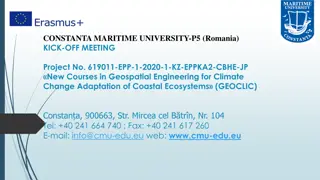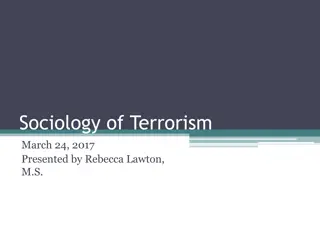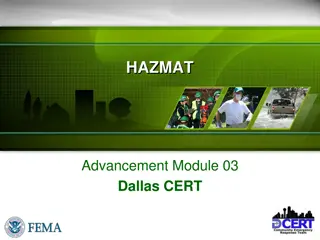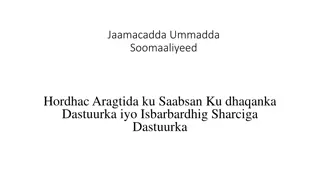Understanding Somali Maritime Predation: Piracy or Terrorism?
Delve into the complexities of Somali maritime predation, questioning whether it falls under traditional piracy or is evolving into a new form of terrorism. Explore the distinct characteristics, international legal definitions, and policy implications surrounding this critical issue.
Download Presentation

Please find below an Image/Link to download the presentation.
The content on the website is provided AS IS for your information and personal use only. It may not be sold, licensed, or shared on other websites without obtaining consent from the author. Download presentation by click this link. If you encounter any issues during the download, it is possible that the publisher has removed the file from their server.
E N D
Presentation Transcript
Somali Maritime Predation Traditional Piracy or a New Form of Terrorism? Anamika Twyman-Ghoshal, PhD. Stonehill College, MA
Problem Statement Is Somali Maritime Piracy a form of Maritime Terrorism? Is coupling these threats a sound policy decision?
Somali Maritime Predation is different... Occurs in the high seas, Targets vessels in motion, During daytime, Likely to be armed and threatening, but not most violent, Less likely to board, Hold the ship for ransom, Unprecedented response.
International Legal Definition of Maritime Piracy United Nations Convention on the Law of the Sea (UNCLOS), 1982, Art. 101 Piracy consists of: Any illegal acts of violence, detention, or any act of depredation committed for private ends by the crew or the passengers of a private ship or a private aircraft, and directed: On the high seas, against another ship or aircraft, or against persons or property on board such ship or aircraft; Against a ship, aircraft, persons or property in a place outside the jurisdiction of any State; Any act of voluntary participation in the operation of a ship or of an aircraft with knowledge of facts making it a pirate ship or aircraft; Any act of inciting or of intentionally facilitating an act described in subparagraph (a) or (b) of this article.
International Legal Definition of Maritime Piracy Convention for the Suppression of Unlawful Acts against the Safety of Maritime Navigation (SUA), 1988, Art. 3 Any person commits an offence if that person unlawfully and intentionally: (a) seizes or exercises control over a ship by force or threat thereof or any other form of intimidation; or (b) performs an act of violence against a person on board a ship if that act is likely to endanger the safe navigation of that ship; or (c) destroys a ship or causes damage to a ship or to its cargo which is likely to endanger the safe navigation of that ship; or (d) places or causes to be placed on a ship, by any means whatsoever, a device or substance which is likely to destroy that ship, or cause damage to that ship or its cargo which endangers or is likely to endanger the safe navigation of that ship; or (e) destroys or seriously damages maritime navigational facilities or seriously interferes with their operation, if any such act is likely to endanger the safe navigation of a ship; or (f) communicates information which he knows to be false, thereby endangering the safe navigation of a ship; or (g) injures or kills any person, in connection with the commission or the attempted commission of any of the offences set forth in subparagraphs (a) to (f).
So what is Maritime Piracy? Range of behaviors (YOUNG, 2007; MURPHY, 2009) Common criminal piracy Highly organized criminal piracy SOURCE: A. Young, 2007 IMO Classification of Attacks and Assault (1993) Low-level armed robbery Medium-level armed assault and robbery Major criminal hijack
Defining Terrorism No agreement, over 200 definitions Common factors include: Political motivation Use or threat of violence Generate fear Innocent targets Form of communication Audience broader than the direct victims
Motivation Robert K. Merton s Anomie Theory Mean-Ends Discrepancies create strains Key Deviant Adaptations: Rebellion (social crime) Innovation (anti-social crime)
Motivation of Somali Piracy No notable history of piracy 12th January, 1991 MV Naviluck 26th January, 1991 Siad Barre ousted
1960 Somali Independence A brief history of Somalia 1969 Siad Barre assumes power 1974 1977 Coastal Development Project (relocation) Invasion of Ethiopia (Ogaden) Som Map.JPG 1991 MV Naviluck Siad Barre is ousted, civil war Somaliland declares independence Illegal Unregulated Unreported Fishing (IUU) / Toxic Waste Dumping 1998 Puntland declared autonomy 2000 Transitional National Government 2004 Transitional Federal Government Tsunami Galmudug declares autonomy Islamic Courts Union UN Security Council Res. 1851 US Airstrikes begin EUNAVFOR authorizes land strikes 2006 2008 2012
FARAH ISMAEL IDLE Defensive piracy Piracy business Rationalizations of piracy defensive piracy If you hold hostage innocent people, that s a crime. If you hold hostage people who are doing illegal activities, like waste dumping or fishing, that is not a crime. (INTERVIEWWITH SUGULE ALI, IN GETTLEMAN, 2008) Sporadic piracies of the early 1990s evolved into business There is no country in the world that does not take taxes. In a small country with no government, a small militia catches a ship and takes some taxes from them, and then releases them without harming or killing them, there is nothing wrong with that. The first decision was to defend our waters. After that a lot of money was made and more and more people got involved. Because of that it s turned into a business. There is no problem taking a ship. It will only be taxed and released safely. (INTERVIEWWITH FARAH ISMAEL IDLE, IN REEVE, 2012) Primitive Taxation Pioneer pirates to Novice pirates
Stateless Somalia? Puntland Stateless and globalized The process of globalization in Somalia was enhanced by the collapse of the State. (MARCHALETAL., 2000, P.1) Somalia s telecommunications are known to be the cheapest and having the most extensive coverage in the continent. (UNDP, 2001, P.107; SEEALSO THE ECONOMIST, 2005; WINTER, 2004; SOUTHWOOD, 2007) Uneven Development, Inequitable Structures Regional Development Variations Awareness of Inequalities & Injustice Som Map.JPG
Escalation of Piracy Stateless and globalized The process of globalization in Somalia was enhanced by the collapse of the State. (MARCHALETAL., 2000, P.1) Somalia s telecommunications are known to be the cheapest and having the most extensive coverage in the continent. (UNDP, 2001, P.107; SEEALSO THE ECONOMIST, 2005; WINTER, 2004; SOUTHWOOD, 2007) Press Freedom Somali Diaspora : Distant, membership reference group Remittances are the glue that holds many families together. They are a means by which individuals living in exile, away from their extended families, actively fulfill their social obligations and play a meaningful role in their communities despite the physical distance that separates them. (HAMMOND, 2007, P.126)
Component 5 Impact on Governability Dysnomie from above Lack of global norm making mechanisms Inconsistent enforcement of international rules & regulatory patchwork of legal traditions and practices Dysnomie from within Insufficiency of national norm making mechanisms Regulatory patchwork of legal traditions and practices & inconsistent enforcement of rules Ineffective civic governance Normative Deviance
Findings: Somalia case study What spurred on piracy in Somalia? Why is piracy in Somalia different? Why the dramatic increase at the end of the 2000s?
Policy Implications Somaliland Somalis need to be stakeholder in any counter piracy actions Bottom up approach needed, not top down International efforts need to be consistent and just, have to apply to Piracy IUU Toxic Waste Dumping
Why define piracy as terrorism? Policy implications Integrated enforcement strategy Efficient
Problem of labeling Somali piracy terrorism
Thank you Anamika Twyman-Ghoshal, Ph.D. a@twymanghoshal.com
